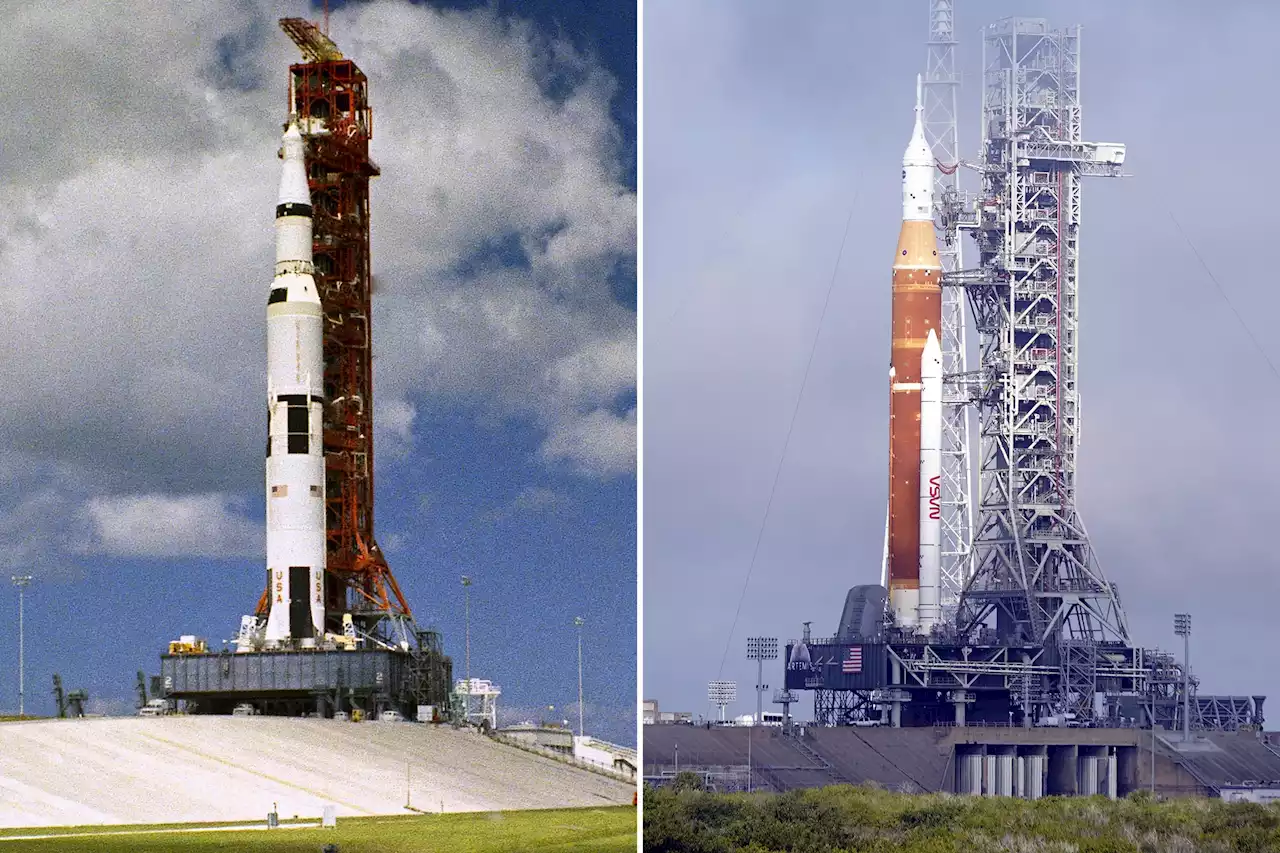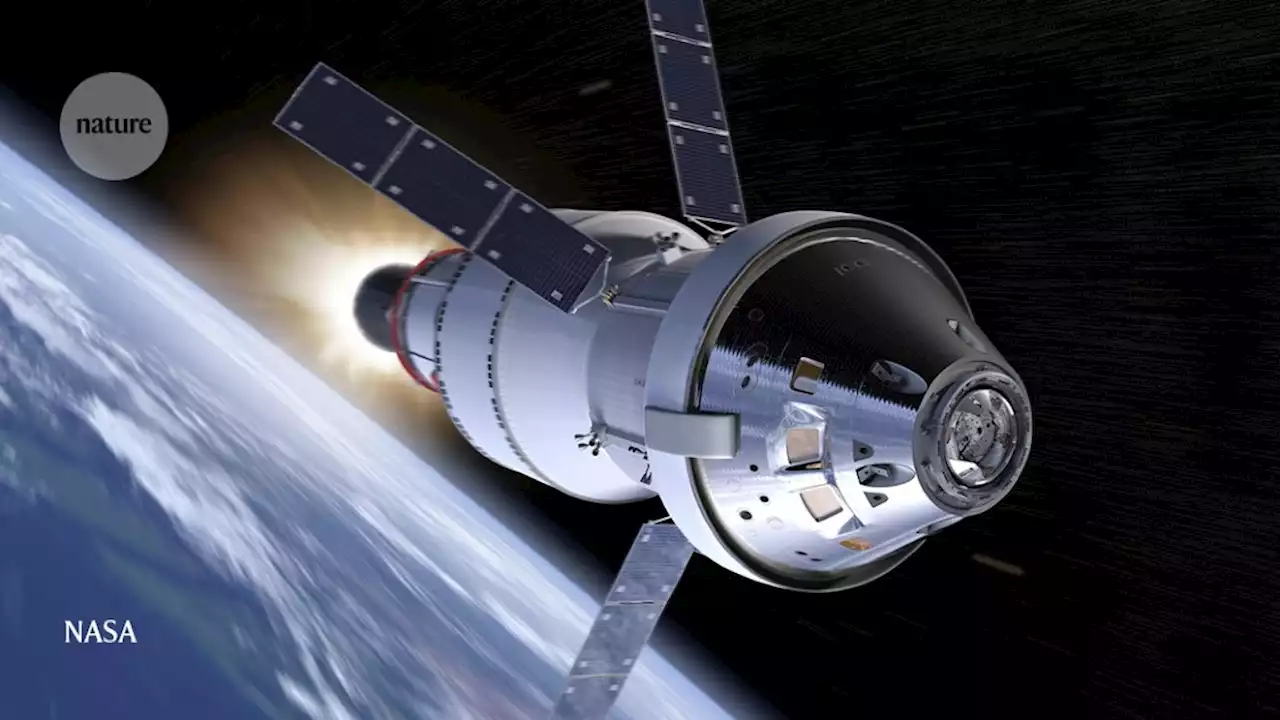After years of work, the 322-foot Space Launch System, built to send people to the moon, is finally ready to fly
In September 1961 NASA took over the facility, eager for a manufacturing site with a deep-water port to build the Apollo program’s Saturn V rocket. The core stage of the Saturn V was made here, as was the space shuttle’s iconic orange fuel tank. “Until recently, you didn’t get out of Earth orbit unless you went through Michoud,” said Boeing engineer Amanda Gertjejansen.
Building a rocket of this size requires a vast, largely unseen infrastructure. Consider the welds on the SLS core stage. Unlike typical welds made with super-hot torches or plasma arcs, those on SLS are created with friction. A screw-like pin is placed into seams between two metal plates. When spun rapidly, the pin heats up the seam’s metal to about 900 degrees Fahrenheit, just enough to soften it like butter. Dragging the pin along the seam fuses the edges.
Later that day in Michoud’s Building 103, Gertjejansen showed me the fruit of all this labor: the core stage of SLS for Artemis II. Two hundred and twelve feet long when complete and 27.6 feet in diameter, the vehicle’s core stage felt viscerally, preposterously big: a monument ranging from cream to apricot in color, its foam-covered exterior turning orange as it reacted with oxygen in the air. Thick silvery piping ran along the outside of the rocket to feed the engines with fuel.
A rack of computers in the Systems Integration Lab, abuzz with fans, traces out a semicircle about as wide as SLS itself. Covered with metallic boxes and bundled white cables, it holds a flight-qualified copy of the SLS computers and avionics. Elsewhere in the lab hums a system called the Advanced Real-Time Environment for Modeling, Integration, and Simulation that simulates SLS launches with exacting precision, down to the propellant in the rocket’s tanks.
For Shaun Phillips, SLS’s flight software lead, the moment of truth came in March 2021 at NASA’s Stennis Space Center in Mississippi. During a test of the Artemis I core stage, its four RS-25 engines ignited and produced 1.6 million pounds of thrust for a full eight minutes—the amount of time they will need to fire during Artemis I. Until then, the rocket’s software had controlled only virtual rockets for that length of time. Now it was handling the real thing without issue.
United States Latest News, United States Headlines
Similar News:You can also read news stories similar to this one that we have collected from other news sources.
 EXPLAINER: NASA tests new moon rocket, 50 years after ApolloCAPE CANAVERAL, Fla. (AP) — Years late and billions over budget, NASA’s new moon rocket makes its debut next week in a high-stakes test flight before astronauts get on top. The 322-foot (98-meter) rocket will attempt to send an empty crew capsule into a far-flung lunar orbit, 50 years after NASA's famed Apollo moonshots.
EXPLAINER: NASA tests new moon rocket, 50 years after ApolloCAPE CANAVERAL, Fla. (AP) — Years late and billions over budget, NASA’s new moon rocket makes its debut next week in a high-stakes test flight before astronauts get on top. The 322-foot (98-meter) rocket will attempt to send an empty crew capsule into a far-flung lunar orbit, 50 years after NASA's famed Apollo moonshots.
Read more »
 Moon shot: NASA’s Artemis Space Launch System vs the Apollo Saturn V by the numbersThe Space Launch System rocket being launched by NASA isn't as big as the Saturn V moon rocket but it's powerful
Moon shot: NASA’s Artemis Space Launch System vs the Apollo Saturn V by the numbersThe Space Launch System rocket being launched by NASA isn't as big as the Saturn V moon rocket but it's powerful
Read more »
 What time is NASA's Artemis 1 SLS megarocket launch to the moon?NASA's Artemis 1 mission will launch on the first Space Launch System rocket and its Orion spacecraft on Monday, Aug. 29.
What time is NASA's Artemis 1 SLS megarocket launch to the moon?NASA's Artemis 1 mission will launch on the first Space Launch System rocket and its Orion spacecraft on Monday, Aug. 29.
Read more »
 NASA’s Artemis Moon mission is set to launch: here’s the science on boardThe most powerful rocket ever built will soon head for the Moon, carrying with it a trove of satellites and radiation experiments.
NASA’s Artemis Moon mission is set to launch: here’s the science on boardThe most powerful rocket ever built will soon head for the Moon, carrying with it a trove of satellites and radiation experiments.
Read more »
 Lousy weather could delay launch of NASA’s mega moon rocket | Digital TrendsNASA is aiming to conduct the first launch of its mega moon rocket on Monday, August 29, but stormy weather conditions could delay the mission.
Lousy weather could delay launch of NASA’s mega moon rocket | Digital TrendsNASA is aiming to conduct the first launch of its mega moon rocket on Monday, August 29, but stormy weather conditions could delay the mission.
Read more »
 Weather looking favorable for Monday’s rocket launch to moon | Digital TrendsNASA’s Artemis I rocket launch from the KennedySpaceCenter has a 70% chance of favorable weather conditions prevailing, according to the latest data.
Weather looking favorable for Monday’s rocket launch to moon | Digital TrendsNASA’s Artemis I rocket launch from the KennedySpaceCenter has a 70% chance of favorable weather conditions prevailing, according to the latest data.
Read more »
